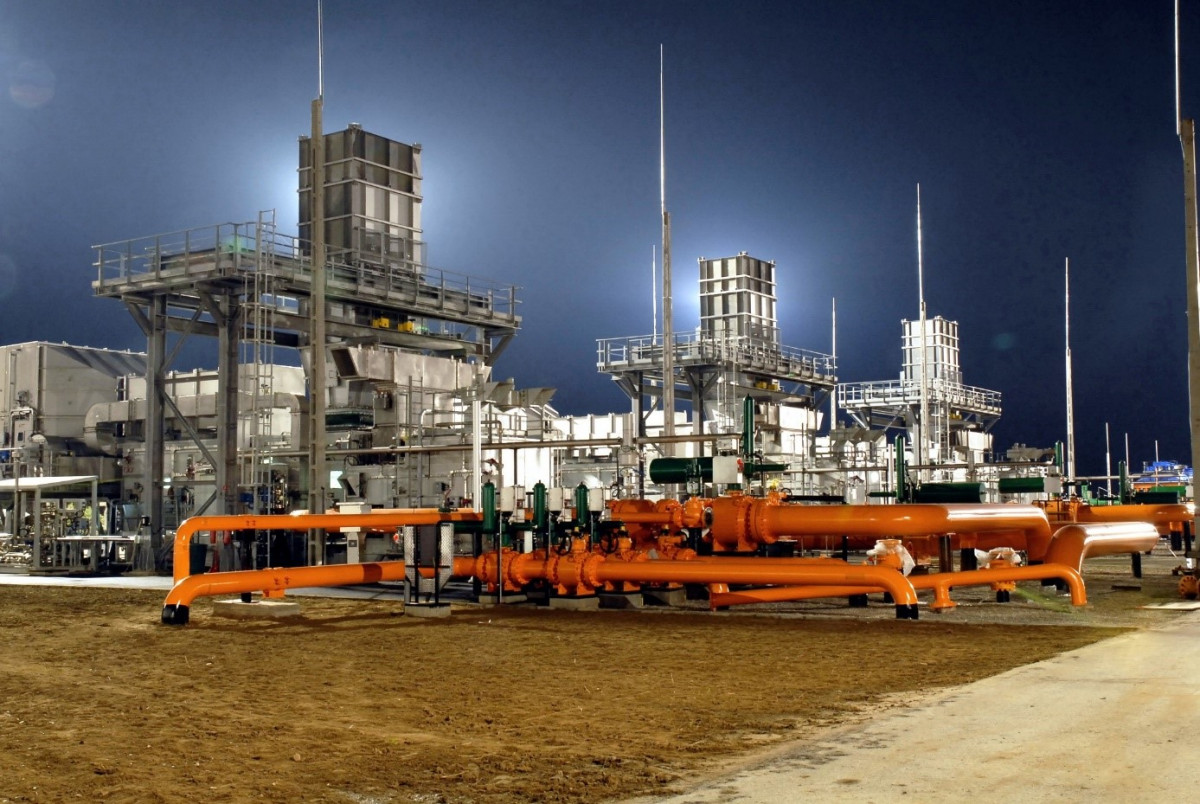Compressor Station
The pressure of natural gas decreases during pipeline transportation due to frictional losses. In order to maintain continuous transmission and increase transmission capacities, pressure has to be raised. This is the function of the compressor stations installed at specific points of the pipelines. In our system, at 8 locations - Beregdaróc, Nemesbikk, Hajdúszoboszló, Városföld, Csanádpalota, Szada, Báta and Mosonmagyaróvár - operate centrifugal compressors that are driven by high-performance gas turbines, similar to the ones used in aircrafts.
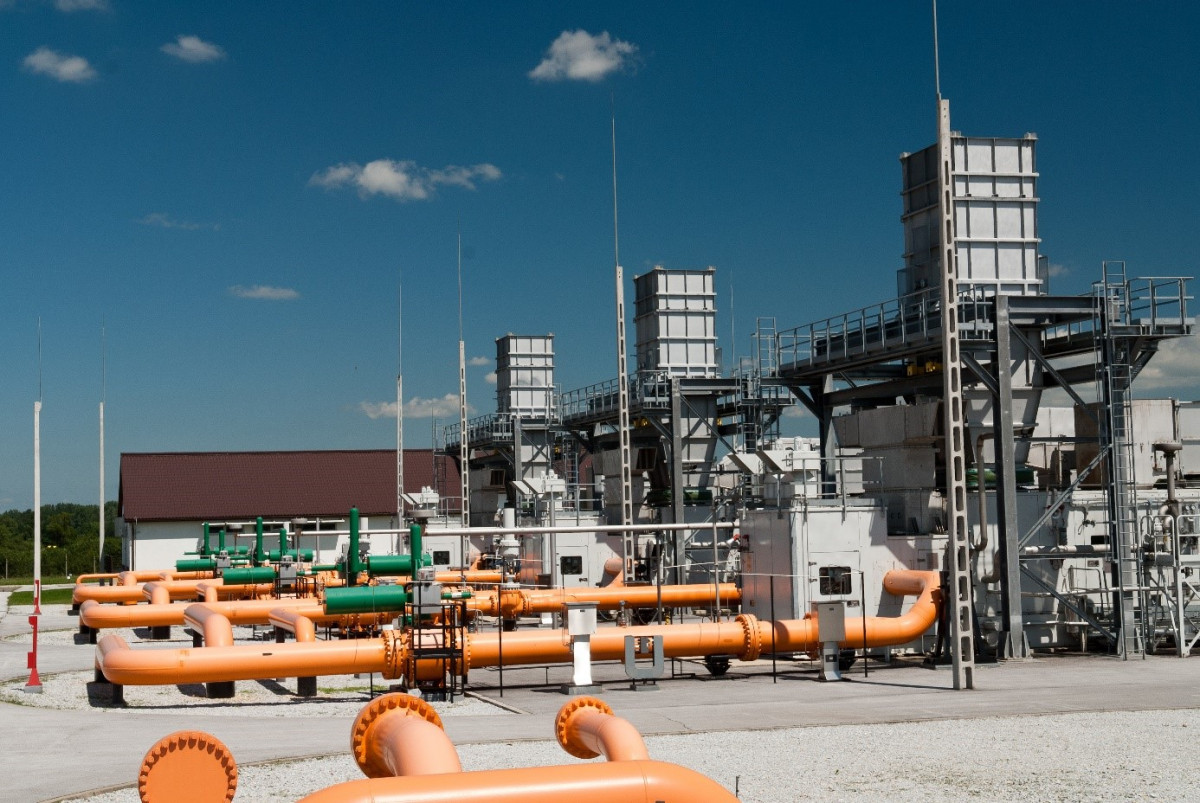
Natural gas is transmitted at high pressure (40–75 bars). This pressure is 20–40 times larger than the pressure in the rubber tyres of cars, and equals to the pressure that one would find at a depth of 400–700 meters under the sea.
The first stage of the pressure management process is the filtration of the natural gas arriving via the transmission pipeline.
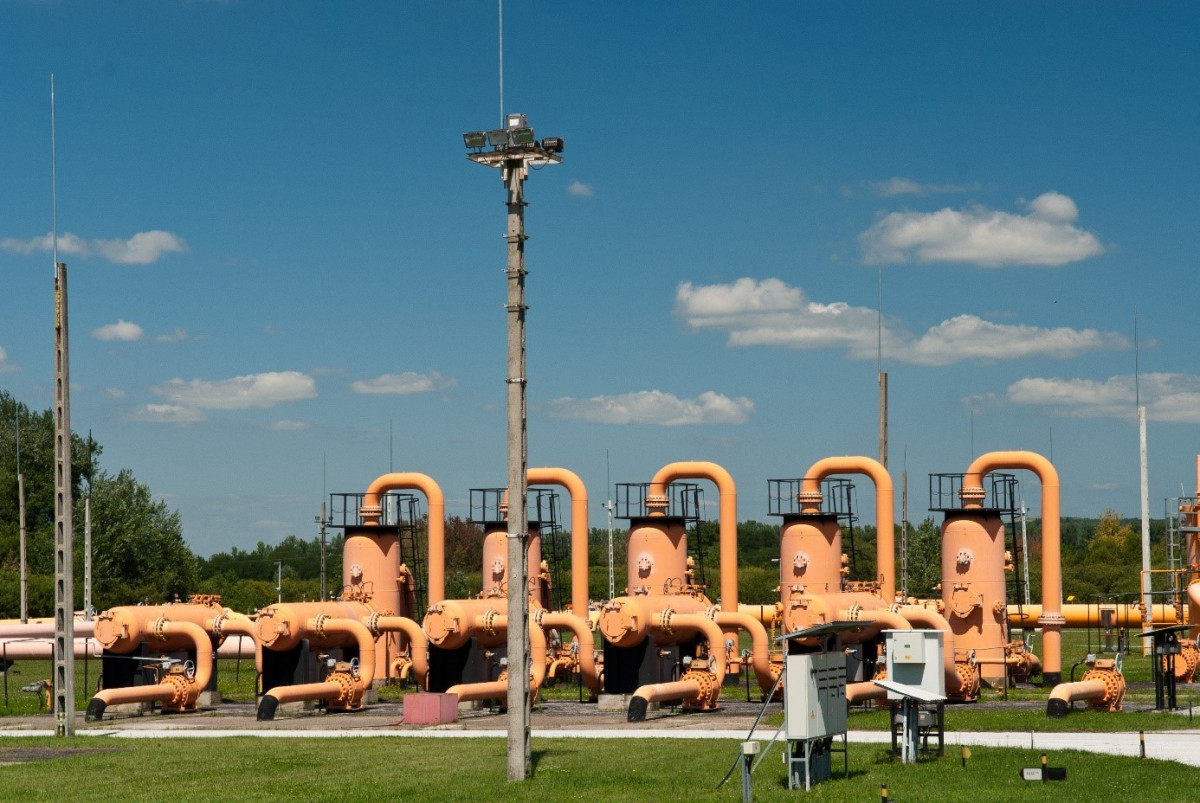
The filter blocks filter the liquid and solid contaminants from the natural gas, in order to protect the compressors operating at high RPMs from damage.
The pressure management of the filtered natural gas is performed by gas turbine driven centrifugal compressors.
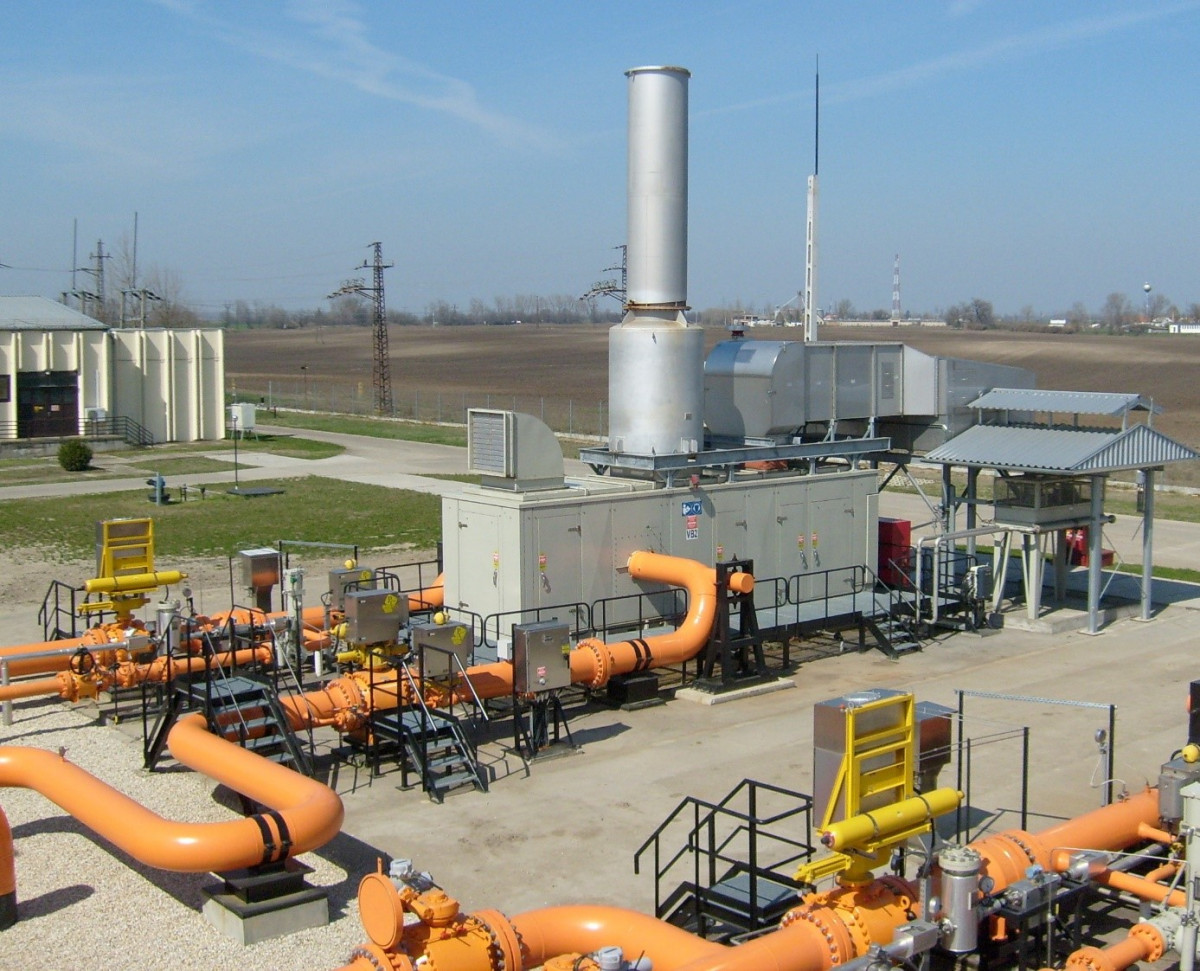
Outdoor design compressor unit is the make of Solar Turbines Inc.
The gas turbines used in natural gas transportation are similar to airliner aircraft engines in terms of construction and operating principle. A notable difference is, however, hat the equipment installed at compressor stations are not designed for a mere few hours of continuous operation; they can be run at maximum power for months non-stop.
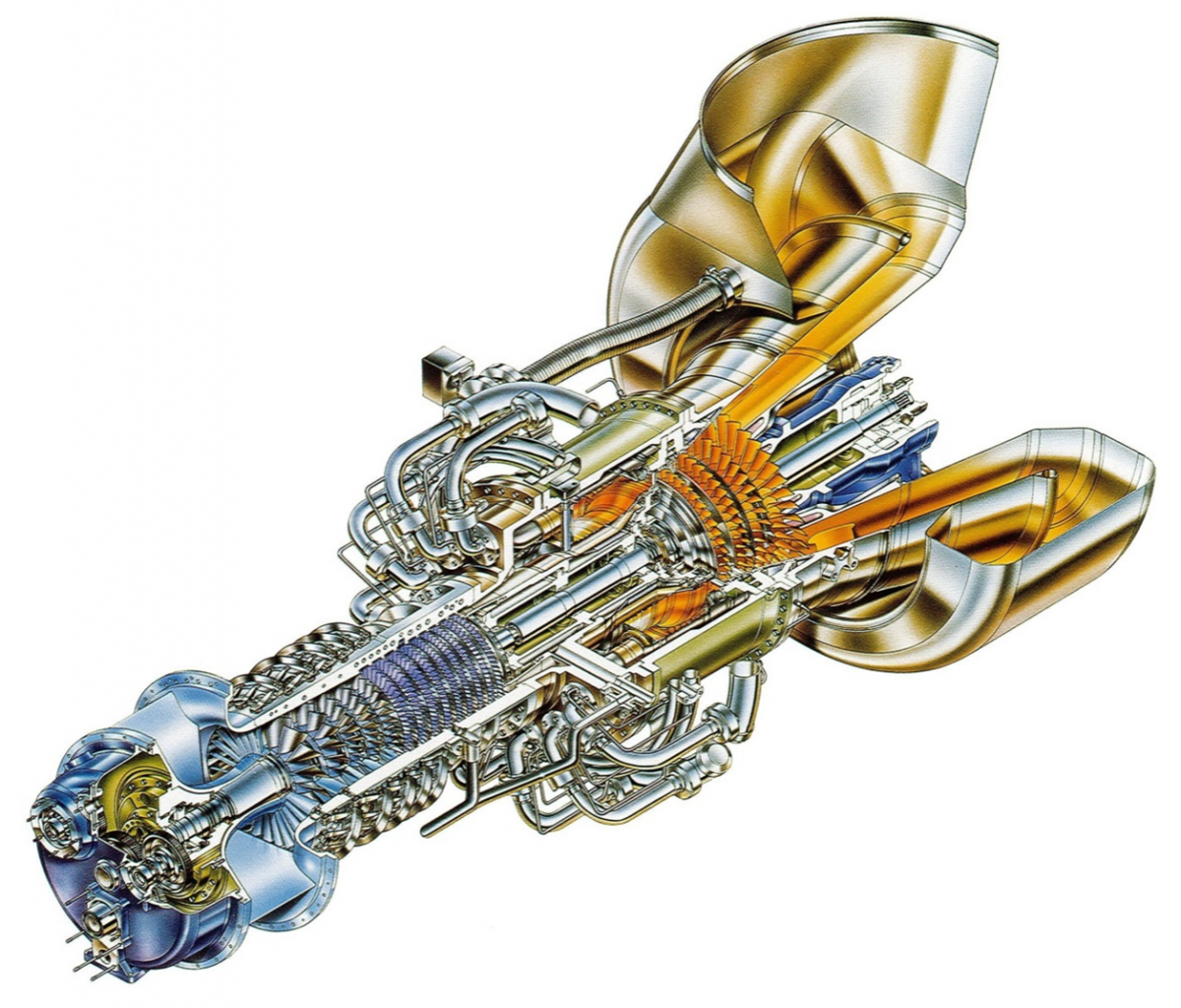
Solar Taurus 70 type gas turbine
Operation of the gas turbine:
The multi-stage axial compressor of the gas turbine sucks in ambient air through the air filter and compresses it. The air of 10-16 bar pressure is mixed with the natural gas in the fuel gasinjectors. The air-natural gas mixture is combusted in the combustion chamber, reaching a temperature of approximately 1,500 °C. The hot exhaust gas pass through the turbine stages at high speeds, and the kinetic energy generated from the expansion rotates the gas compressor through the shaft of the gas turbine.
The gas turbines drive centrifugal compressors as these equipment are the most suitable for transporting large volumes of natural gas (300,000 – 1,000,000 m3 per hour).

6 stage centrifugal compressor
Operation of the gas compressor:
The rotating impellers of the gas compressor accelerate the transported gas, whose flow rate can approach the speed of sound in certain cases. Hence the importance of filtering the natural gas prior to pressure management, as liquid contaminants could damage the blades due to hydraulic impact and solid contaminant particles would wear them away. In the diffuser after the impellers, the gas is decelerated, and a substantial part of its kinetic energy is converted into pressure energy. This is how the compressor creates the necessary pressure in the transmission pipeline.
The gas turbine and the gas compressor are installed in a common enclosure:

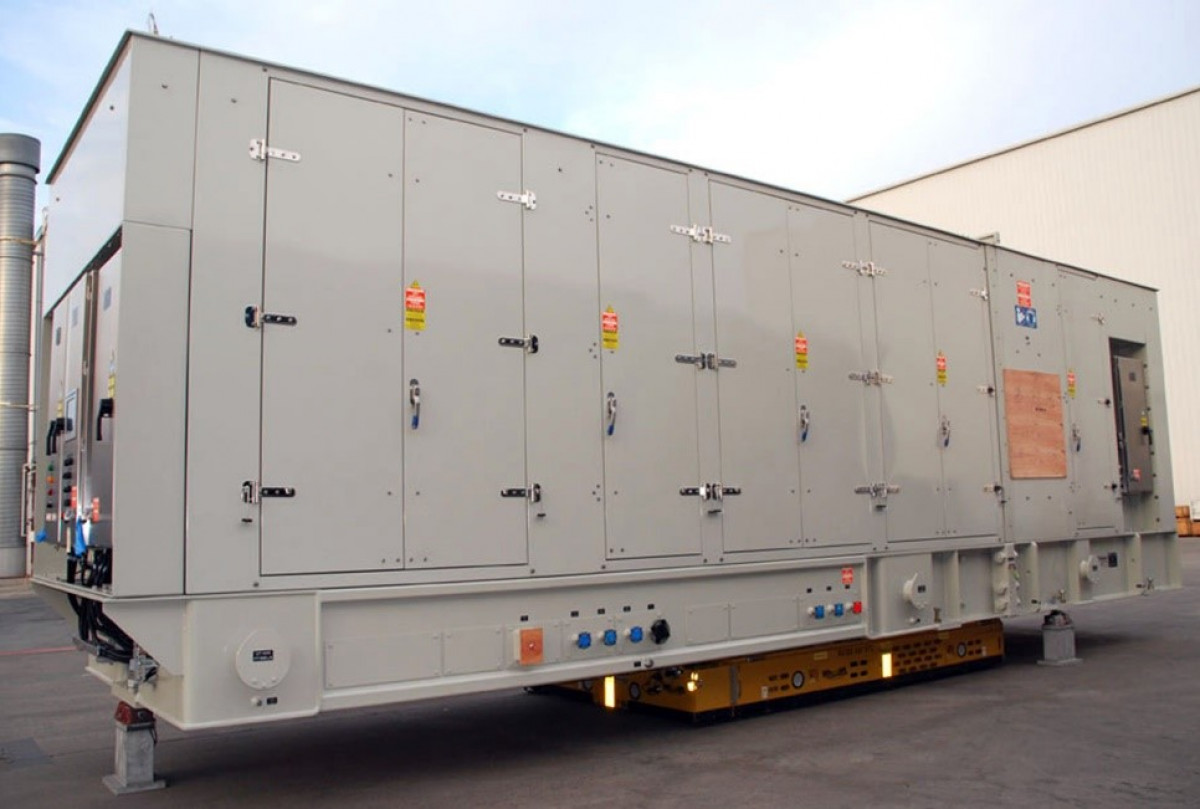
The enclosure is pressurised, so the natural gas, if leaking, will not be able to enter the high-temperature gas turbine space, precluding any formation of explosion hazard.
The enclosure is equipped with gas and fire sensors. In case of gas leakage or fire, the protection system automatically shuts down the operating compressor unit and degasses the system.
The enclosure is equipped with automatic carbon dioxide fire extinguishing equipment. If a fire should form in the cabin due to a technical defect, the enclosed space will be flooded with extinguishing gas by the protection system, rapidly extinguishing any fire.
Where the surroundings of the compressor station are sensitive to noise load, the compressor units are installed in noise protection compressor halls.
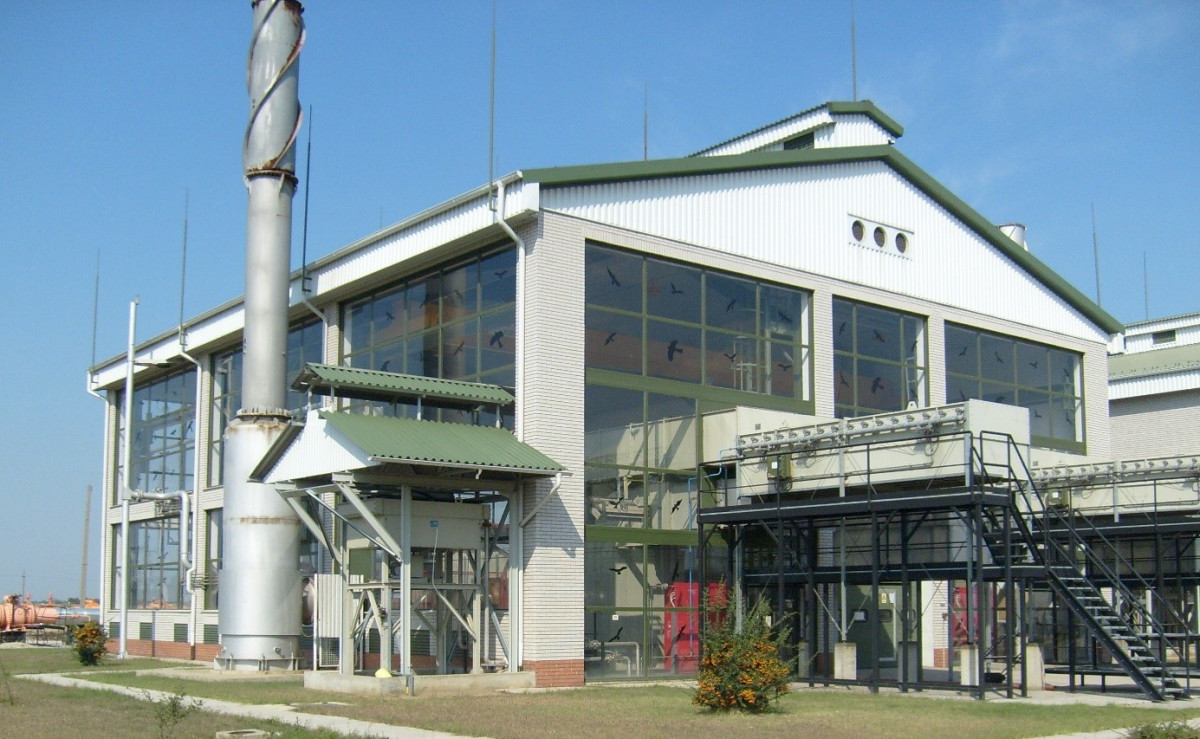
In the course of pressure management, the gas heats up, so an aftercooling unit equipped with electric fans ensures the specified delivery temperature.

To ensure the safe and continuous operation of the compressor units, a number of auxiliary system are required (fuel gas treatment system, instrument air system, sealing gas preparation system, control engineering system, electricity supply system). These auxiliary systems are duplicated, therefore upon any malfunction of the main system, the redundant system will ensure the smooth and continuous operation of the compressor station.
The control and supervision of the technological systems are ensured by highly reliable industrial PLC systems. Thanks to the built-in protective functions, the control engineering will warn of any defective operation, and in case of serious malfunctions, it will automatically shut down the operating equipment and sets the station to a default safety state.
